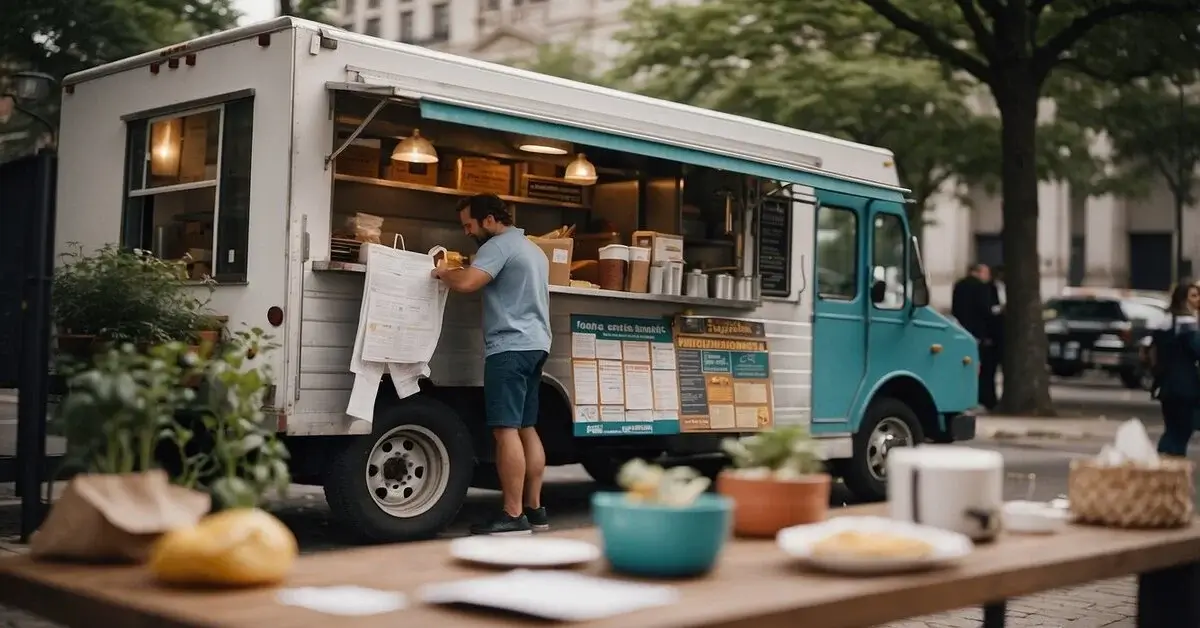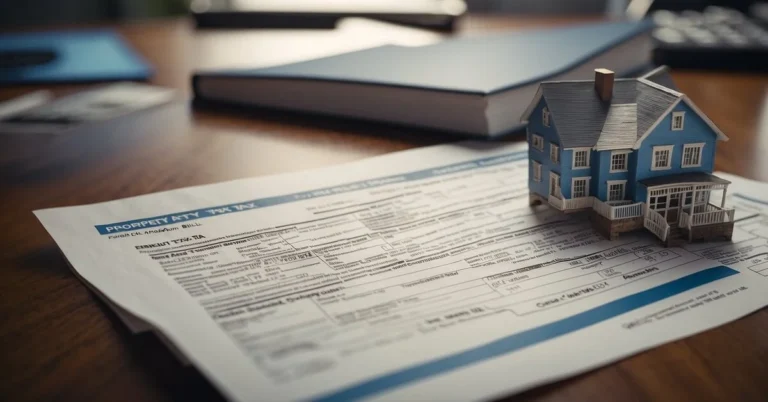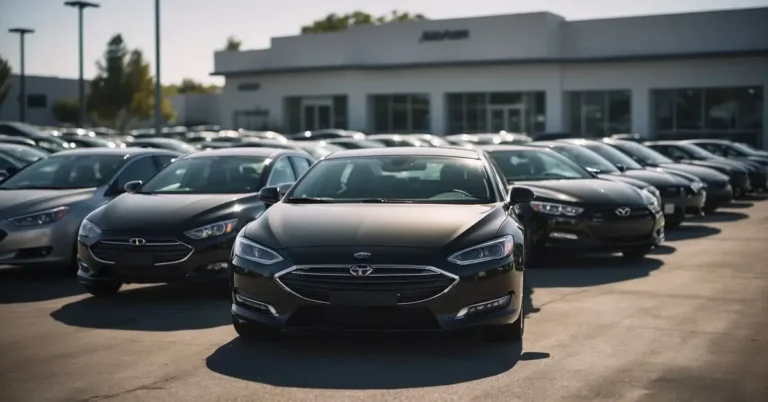Launching a food truck business is a dream for many entrepreneurs, but securing the necessary capital can be a major obstacle. Food truck financing offers a solution, providing various options such as loans, credit lines, and leasing to get your mobile eatery on the road. This guide aims to simplify the financing process, helping you make informed choices to turn your culinary dreams into a successful reality.
Understanding Food Truck Financing
Navigating the world of food truck financing can seem complex, but once you understand the basics, you’re well on your way to launching your mobile culinary dream. We’re here to help you grasp what it entails and how it can benefit you.
What Is Food Truck Financing?
Food truck financing refers to the various financial solutions available to prospective and existing food truck owners. These solutions typically provide the capital needed to purchase a truck, outfit it with necessary kitchen equipment, and cover initial operating expenses. The total initial capital needed for getting a food truck business up and running often ranges between $70,000 to $150,000. Specific financing options for equipment might include buying, leasing, or even renting, with costs for a truck and equipment together hovering between $70,000 to $175,000 depending on various factors such as size and kitchen complexity.
Food truck loans are a tailored type of financing designed to meet the needs of this unique industry. They might come up with terms and rates that reflect the viability and business models prevalent in the food truck sector. Financing rates and terms depend on factors like creditworthiness and the type of financing chosen, with annual percentage rates starting at approximately 3%.
Benefits of Food Truck Loans
The benefits of food truck loans are extensive and can mean the difference between a stalled idea and a thriving business. A well-structured food truck loan can provide:
- Capital: Direct access to funds allows for immediate investment in your food truck venture.
- Flexibility: The ability to choose from various options, like the Small Business Administration’s microloans, business credit cards, and even crowdfunding campaigns, providing a range of solutions based on your specific needs.
- Growth: The opportunity to expand your business by enabling you to invest in quality equipment, marketing, and other growth enablers.
Financing isn’t just a practical necessity but a strategic tool that can help food truck entrepreneurs start and scale their operations in the competitive food truck industry. Whether it’s covering the costs for permits and insurance, which may run $2,000 to $4,000 annually, or ensuring you have the initial food and ingredients budget of approximately $1,000 to $4,000, the right financing solution lays the foundation for a successful food truck enterprise.
Building a Solid Business Plan
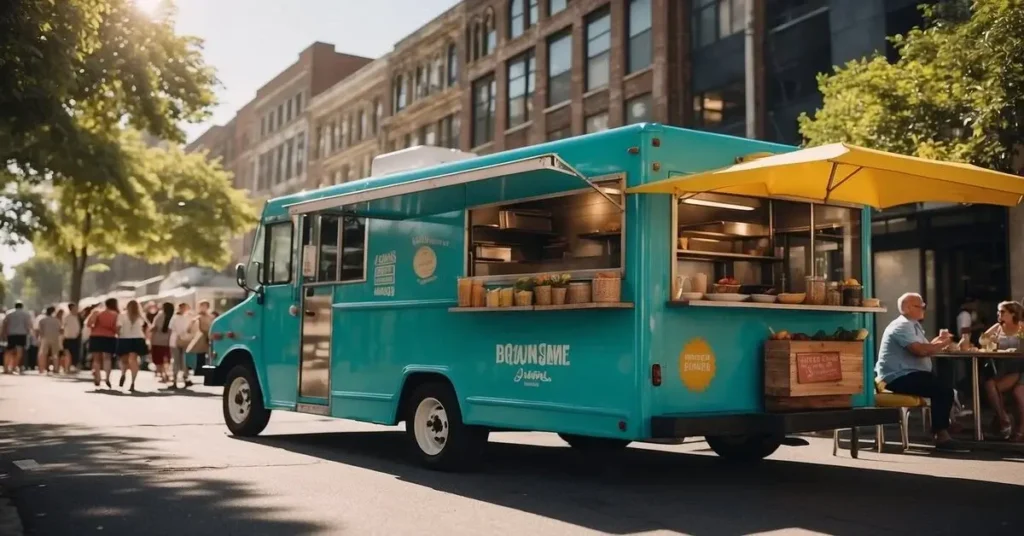
Securing food truck financing starts with a robust business plan that lays out a clear roadmap for success. This plan is crucial in attracting investors and getting the funding we need.
Key Components of a Food Truck Business Plan
The business plan is an essential document for us as we set out on our food truck venture. It should include:
- Executive Summary: This is our elevator pitch. It must articulate our food truck’s mission, the concept, and our unique selling proposition.
- Market Analysis: Here, we’ll dig deep into our target market, identifying potential customers, competitors, and market trends that influence how our food truck will fit into the local culinary scene.
- Organization and Management: This subsection outlines our business structure, ownership, and management team, including a breakdown of roles and responsibilities.
- Services or Food Menu: Our menu is more than just a list of dishes. It’s a strategic tool that showcases the items that we believe will resonate with our customers and drive our revenue.
- Marketing and Sales Strategy: We must define how we’ll attract and retain customers, the branding, and the sales approach that will get our food truck noticed and preferred.
- Funding Request: If we’re seeking financing, this is where we detail the amount of funding we need and how it will be used.
- Financial Projections: We should provide a forecast that shows our food truck’s viability and how it will generate profit.
Importance of a Well-Constructed Business Plan
A solid business plan not only guides us through the start-up phase but also helps in manage the business effectively. It’s a dynamic document that we’ll adjust as our food truck grows and as market conditions change. It reassures lenders that we’ve thought through every aspect of the food truck business and have a tangible plan for making it profitable.
Evaluating Financing Options
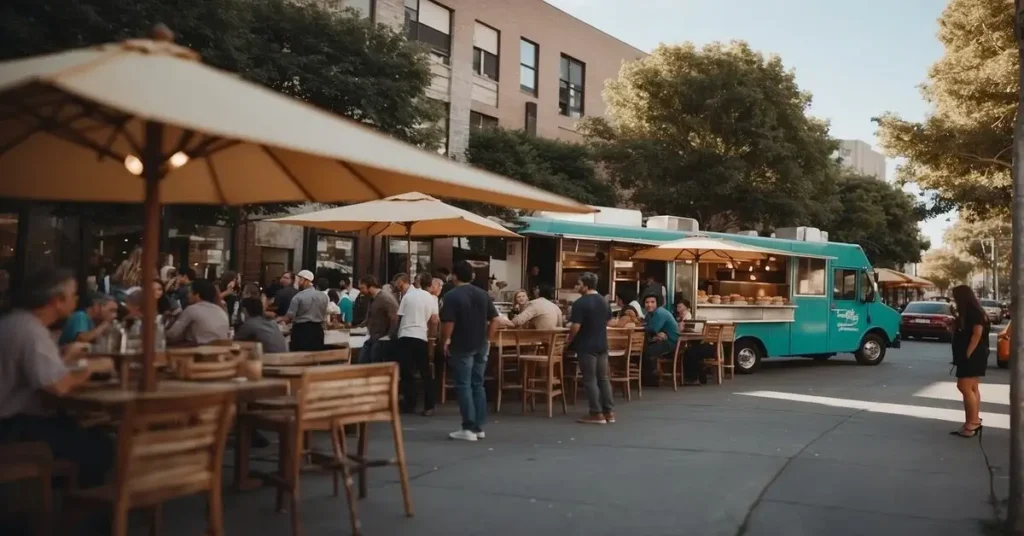
When we dive into the world of food truck financing, we’re faced with a variety of loan types and alternative funding sources. It’s crucial to understand the specifics of each to determine which fits our business needs best.
Types of Food Truck Loans
SBA Loans: These are backed by the Small Business Administration and tend to have lower rates, but the application process can be lengthy and requires a strong credit history.
- Equipment Financing: Specific to the purchase of equipment, these loans may offer fast funding with the purchased equipment serving as collateral.
Traditional Bank Loans: Highly structured loans that usually offer competitive interest rates for those who qualify.
Comparing Loan Options
We must carefully compare loan options, looking at key factors such as:
- Interest Rates: Typically, traditional bank loans and SBA loans offer lower interest rates.
- Terms: Some options, like an online lender, might offer shorter terms with a faster application process.
- Credit Requirements: While banks often require a higher credit score, alternatives may have more flexible criteria.
Alternative Funding Sources
Aside from loans, other avenues for food truck financing can include:
- Crowdfunding: Engages a crowd of individuals to contribute small amounts of capital.
- Investors: These can be individuals or small groups who provide funding in exchange for equity in the food truck business.
By exploring both loans and alternative funding sources, we can better navigate the financial landscape to get our food truck up and running.
Qualifying for a Food Truck Loan
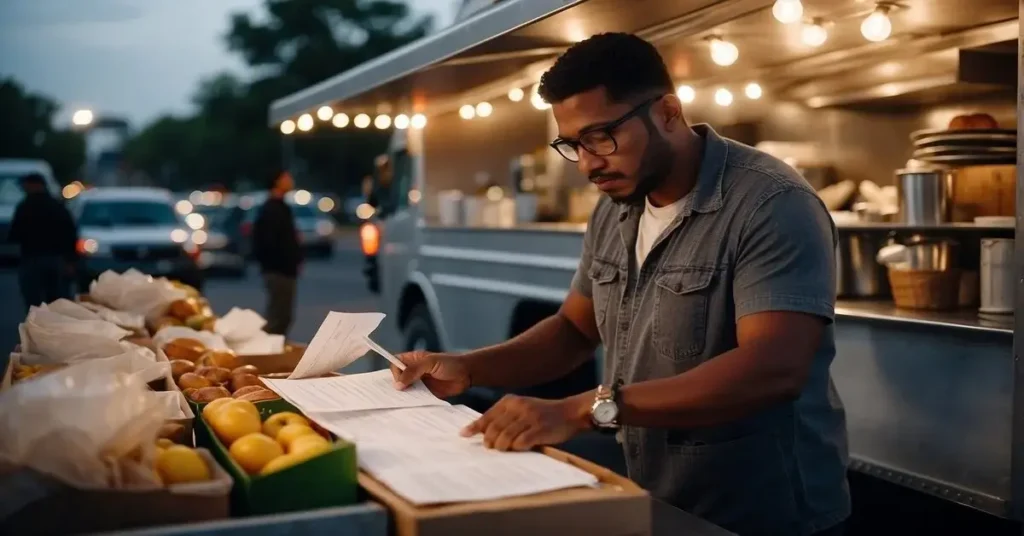
When we consider food truck financing, we need to navigate through criteria like credit scores, collateral requirements, and the specifics of loan terms. These factors are pivotal in securing approval and achieving the dream of operating our food truck.
Credit Score Requirements
A healthy credit score is one of the most critical qualifications for a food truck loan. Generally, we should aim for a score above 680 for traditional bank loans, but some lenders may cater to those of us with a score as low as 580. Good credit demonstrates to lenders that we’re a safer bet for repayment.
Collateral and Down Payments
Lenders often require collateral to secure a loan, which can include the food truck itself or other assets. Collateral reduces the lender’s risk and can also lead to more favorable loan terms. Moreover, we’re typically looking at a down payment, which can vary but often ranges around 10-20% of the total loan value.
Understanding Loan Terms
When we’re poring over potential loan options, it’s crucial we fully grasp the loan terms. These terms cover interest rates, repayment schedule, and the loan’s total lifespan. As we compare, we should watch for terms that align with our revenue and business growth forecasts to ensure sustainability and fiscal health.
Preparing for the Loan Application

When we look into food truck financing, we must understand the loan application process to secure the necessary funds.
Documents and Financials
Before diving into applications, we need to gather our documents and financials. Financial requirements for a food truck loan can vary depending on the lender, but here’s a basic checklist to get us started:
- Business Plan: A comprehensive plan showcasing the viability and strategy of our food truck.
- Credit Score Report: Outlines our business credit history, which lenders will scrutinize.
- Financial Statements: This includes balance sheets, income statements, and cash flow statements.
- Proof of Income: Documentation like past tax returns that show our monthly revenue, especially if it exceeds $10,000, as some financers might have as a threshold.
Navigating the Application Process
The application process for food truck financing may seem daunting, but understanding what’s expected can streamline our experience. Here’s how we can navigate it effectively:
- Eligibility Check: We must meet the basic eligibility requirements, which could be as lenient as having a 580 credit score or as strict as having two years of business history.
- Loan Type Selection: Opt for the loan type that best suits our needs—whether that’s an SBA microloan for smaller investments or a traditional bank loan for larger amounts.
Remember, each step we take towards preparing our application strengthens our chances of getting the financing we need for our food truck dream.
Managing Loan Repayment
When it comes to food truck financing, understanding how to manage loan repayments effectively is crucial for the longevity of your business. We’ll guide you through setting up repayment plans and navigating through different types of interest rates.
Setting Up Repayment Plans
Creating a solid repayment plan is the foundation of managing your financing responsibly. Typically, repayment plans are designed to align with your food truck’s cash flow, ensuring you have enough capital to operate while fulfilling your financial obligations. We recommend starting by:
- Assessing your monthly revenue: Understand how much income your food truck generates in a typical month.
- Determining your expenses: Factor in your operational costs, including inventory, permits, and staff wages.
- Selecting a plan that suits your finances: Commit to a plan that allows for flexible repayment amounts, especially if your income fluctuates.
Moving forward with a clear repayment strategy will help you maintain a good credit score and build trust with your lenders.
Dealing with Variable and Fixed Rates
Interest rates can impact your repayments significantly. Here’s how to handle the two common types:
- Fixed Rates:
- Offer predictability since they remain constant throughout the loan term.
- Makes budgeting easier as the repayment amount is the same each month.
- Variable Rates:
- Can fluctuate with market conditions, affecting your monthly repayment.
- Potentially lower than fixed rates at the start, which could initially reduce costs.
We should choose the interest rate type that matches our risk tolerance and cash flow situation. A fixed-rate could be the right choice if we prefer steady payments, whereas a variable rate could work to our advantage if we’re positioned to pay a lump sum should interest rates fall. Remember, it’s about what best aligns with our unique financial scenario.
Additional Considerations

When considering food truck financing, it’s crucial to think beyond the initial investment. Protecting your business and ensuring you comply with legal requirements are key steps in setting up for success.
Insuring Your Food Truck
Insurance is an essential safeguard for your food truck, helping to protect against unforeseen events that could impact your finances. You’ll need a policy that covers:
- Vehicle insurance: For on-road protection.
- Property insurance: To cover equipment and inventory.
- Liability insurance: In case of customer injuries or property damage.
Ensure your policy addresses the unique risks associated with a food truck, such as coverage for fire or foodborne illness incidents.
Location and Permits
Securing the right location and obtaining the necessary permits are critical to your food truck’s operation:
- Location: Scout for spots with high foot traffic that are also permissible by law for food trucks.
- Permits and Licenses: These can include:
- Health department permit
- Food handler’s license
- Parking permits, which may vary by location or event
- Business operation licenses
Remember, overhead costs will include recurring permit fees, which are as vital to your budgeting as ingredients and staff wages. Ensure you always stay ahead of renewal dates to avoid fines or interruptions in business.
Practical Tips for Food Truck Owners
We understand that food truck financing is crucial to get you rolling, but managing your assets is just as important for long-term success. It’s all about smart inventory management and strategic equipment purchases.
Managing Inventory and Supplies
Knowing exactly what you have and what you need can save us both time and money. Implementing a First In, First Out (FIFO) system ensures that nothing goes to waste. Here’s a simple approach:
- Track Inventory Levels: Keep a tight record of what comes in and what goes out.
- Analyze Usage Patterns: Identify which items are used the most and adjust orders accordingly.
This practice not only helps in reducing spoilage but also aids in maintaining cash flow for other important expenses.
Making Equipment Purchases
When it’s time to buy a food truck or upgrade your kitchen equipment, think about both costs and value. We’ve got a few options:
- Purchase Outright: It may have a higher upfront cost, but you’ll own the equipment outright.
- Equipment Loans: These can spread out the cost, making it more manageable.
- Leasing: A good option if you want to keep updating your gear without the commitment.
Each choice has its perks, and equipment financing can play a big role here, helping us to preserve our capital and maintain financial flexibility. Here’s a brief comparison:
Owning vs. Financing
| Ownership | Equipment Loans | Leasing |
|---|---|---|
| Higher upfront cost, but lower long-term | Smaller, regular payments over time | Flexibility to upgrade, but may cost more overall |
| No interest | Interest adds to the total cost | Usually includes maintenance |
Choose the path that aligns with our operational needs and financial strategy. With the right approach, we can make our food truck a local fixture without breaking the bank.
Frequently Asked Questions
How can an entrepreneur purchase a food truck without any upfront capital?
Acquiring a food truck with zero upfront capital is possible through various creative financing options. Leasing or renting a food truck might be a viable solution as it requires less initial investment. Additionally, seeking out business loans like SBA Microloans, which are designed for smaller funding amounts, could also be a feasible route for entrepreneurs looking to get started without a heavy burden of upfront costs.
Where can I find lenders that specialize in food truck financing?
Some lenders understand the unique needs of the food truck industry and offer tailored financing solutions. Your search for such lenders can begin by considering National Business Capital, which provides financing options for food truck businesses with more relaxed requirements regarding credit scores and business revenue compared to traditional banks.
What are some tips for saving money when starting a food truck business?
To save money while launching a food truck venture, it’s important to focus on efficient budgeting, which includes opting for a cost-effective Point of Sale system and finding ways to reduce initial food and ingredients costs. Further savings can be achieved by choosing simpler decor and seeking out second-hand kitchen equipment in good condition, possibly saving thousands in start-up costs.
We hope you found some inspiration or useful tips in our article on ’food truck financing’! If so, we’d love to hear your thoughts and ideas in the comments below! And if you’re looking for more insightful content, don’t hesitate to explore our other articles:
- Strategic Finance: Business Growth And Decision-Making
- Entrepreneurial Finance Lab: Successful Startup Funding
- Financial Planning For Business Owners: Strategies For Success
- 10 Facts About Investing: A Guide To Growing Your Wealth
Your comments help us create better content for you. Happy reading!

